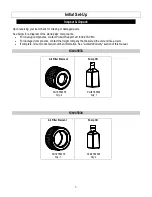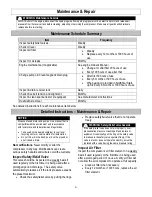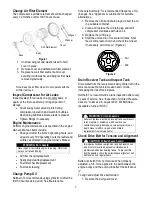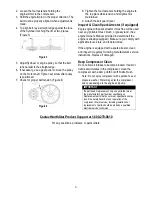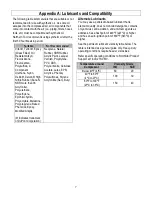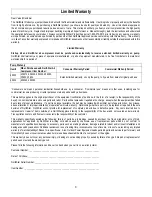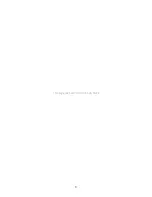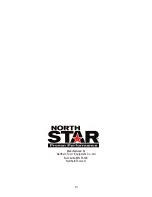
7
Appendix A: Lubricants and Compatibility
The following table lists materials that are suitable or not
recommended for use with synthetic oil. As some oil
escapes into the compressed air, all components that
come into contact with the air (i.e., piping, filters, hoses,
tools, etc) must be compatible with synthetic oil.
Northern Tool recommends using synthetic oil after the
first 50 hour break in period.
Suitable
Not Recommended
Viton®, Teflon®, Epoxy
(Glass Filled), Oil
Resistant Alkyd,
Fluorosilicone,
Flourocarbon,
Polysulfide, 2-
Component
Urethane, Nylon,
Delrin®, Celcon®, High
Nitrile Rubber (Buna N.
NBR more than 36
Acrylonite),
Polyurethane,
Polyethylene,
Epichlorohydrin,
Polyacrylate, Melamine,
Polypropylene, Baked
Phenolics, Epoxy,
Modified Alkyds
(® indicates trademark
of DuPont Corporation)
Neoprene, Natural
Rubber, SBR Rubber,
Acrylic Paint, Lacquer,
Varnish, Polystyrene,
PVC, ABS,
Polycarbonite, Cellulose
Acetate, Latex, EPR,
Acrylics, Phenoxy,
Polysulfones, Styrene
Acrylonitile (San), Butyl
Alternate Lubricants
You may use a petroleum-based lubricant that is
premium quality, does not contain detergents, contains
only anti-rust, anti-oxidation, and anti-foam agents as
additives, has a flashpoint of 440ºF (227ºC) or higher,
and has an auto-ignition point of 650ºF (343ºC) or
higher.
See the petroleum lubricant viscosity table below. The
table is intended as a general guide only. Heavy-duty
operating conditions require heavier viscosities.
Refer specific operating conditions to NorthStar Product
Support at 1-800-270-0810.
Temperature around
Compressor
Viscosity Grade
ISO
SAE
Below 40ºF (4ºC)
60
20
40ºF to 80ºF
(4ºC to 27ºC)
100
30
80ºF to 100ºF
(27ºC to 38ºC)
150
40



